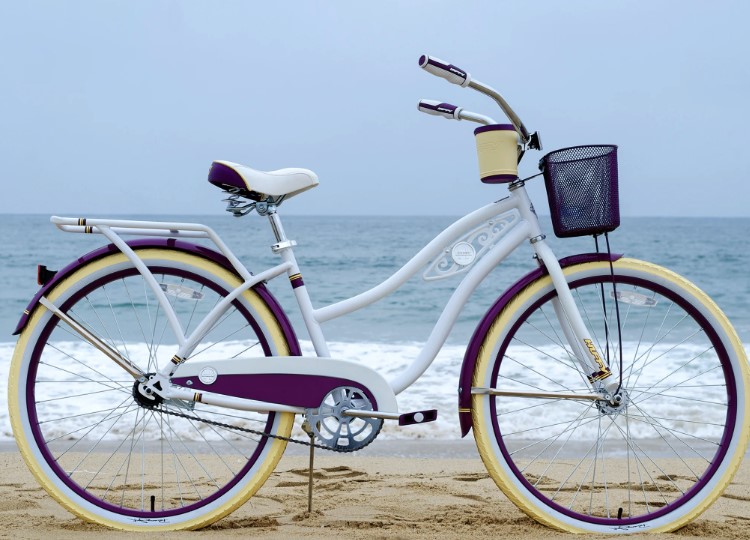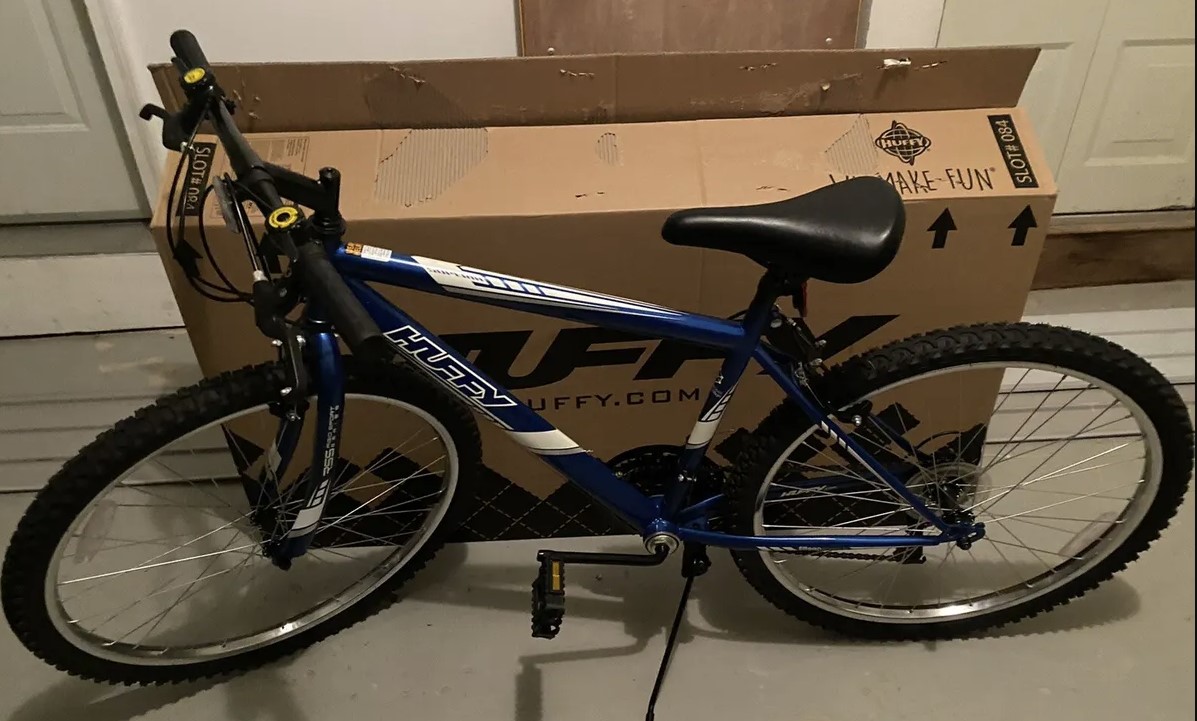If you have an old Huffy bike tucked away in your garage or basement, you may be wondering – how much could this bike actually be worth? As one of the most popular and mass-produced bike brands in the U.S. for decades, Huffys hold nostalgic value for many people. But does that translate to hard resale value for your vintage ride?
In this comprehensive guide, we’ll look at how to determine your Huffy’s model, year, and condition in order to accurately assess its current value. We’ll also explore tips for refurbishing, customizing, and selling your Huffy bike to get top dollar. Let’s dive in!
Examining the Huffy Bike Company’s History and Brand
First things first – who is Huffy, and why did they dominate bike sales for so long? The Huffman Manufacturing Company was founded in Dayton, Ohio in 1892. They originally produced lawn equipment, then expanded into children’s wagons, scooters, and tricycles.
In 1934, Huffman acquired the Davis Sewing Machine Co. and shifted focus to the emerging bicycle market. They released their first official “Huffy” branded bike in 1949, although they had produced bicycles under other brand names for years prior.
Over the next several decades, Huffy became one of America’s most prominent and affordable bike makers. They pioneered mass retail partnerships to sell their products in catalogs, department stores, and superstores like Kmart, Walmart, and Target. Their bikes appealed widely due to low prices and kid-friendly styles.
How much is a Huffy Bike worth?
The monetary value of old Huffy bicycles can vary quite a bit depending on the specific model, year of production, current condition, and market demand from collectors. Iconic mid-century models like the 1950s Huffy Radiobike or the 1960s Dragster in mint condition could potentially sell for a few hundred dollars to the right buyer. More commonplace models from the 1970s or 1980s tend to trade hands locally for around $50-$150 if they are in good working order. Rare 1990s Warner Bros. themed bikes with Looney Tunes or Disney character decor in great shape might fetch $200+. Even basic but functional older Huffys from the 1940s-1960s still hold appeal for some bicycle enthusiasts and historians, generally commanding around $100 give or take depending on uniqueness, components, and restoration needs. Factors like limited production runs, desirability among collectors, and one-of-a-kind customization details impact pricing for vintage Huffys from the mid to late 1900s.
Identifying Your Huffy Bike Model and Year
If you have an older Huffy tucked away somewhere, start by identifying key details that will impact it’s current value:
- Model name – Popular models included the Dragster, Sierra, Nel Lusso, and Cranbrook. Check the bike frame for a model name plate if original.
- Year – Huffy bikes have a 4 digit code stamped into the frame. The first two numbers indicate the year. You may also find a production date code on component parts.
- Size – Measure the wheel diameter (usually 24” or 26” for adult Huffys) and frame height. Kids models came in 12″, 16”, 20” and 24” sizes.
- Gender style – Step through frame for women’s model or horizontal top bar for men’s.
Once you identify the model name, year, size, and gender style, you can better pinpoint the exact bike you have and do accurate market research.
We’ll look more closely at popular models and collections below.
Most Popular Vintage Huffy Bikes and Resale Values By far, Huffy’s most ubiquitous and enduring bicycle model was the timeless single speed coaster brake 26” Rocket series. Sold in various iterations from 1949-2000 under names like the Rocket, Power Shift Rocket, and Scallop Rocket, over 30 MILLION of these classes American steel-frames were produced in Dayton Ohio and rolled out across the country.
As the quintsuper important Huffy bike, the Rocket embodied everything the brand stood for – durability, reliability, and accessibility. These bikes were built to last generations. So if you have an original 1950s-70s Rocket, it could be worth anywhere from $50-$300 depending on condition, color, and customization details.
Outside of the Rocket, other popular mid-century Huffy models that hold collectible value include:
- Dragster – The hotrod-styled muscle bike with banana seat, iconic “ape-hanger” handlebars, and flashy chrome accents. Mint condition 1950-70s models reach $300-$800.
- Sierra – Huffy’s classic 1970s BMX bike made for daring dirt jumps and street tricks. Desirable details include the redline tires, padded saddle, and front caliper brake. Well-kept vintage models sell for around $100-$400.
- Nel Lusso – Meaning “luxurious comfort” in Italian, the Nel Lusso featured deluxe comfort frames on Huffy’s women’s and men’s bikes from the 1960s. A restored vintage Nel Lusso could list around $150-$350.
Determining Overall Condition A Huffy bike’s condition significantly influences how much it’s worth. Let’s explore aspects that affect resale value:
Originality – Has the bike been altered or customized over the years? Are original branded parts like wheels, brakes, gears, tires, pedals, and decals still intact? The more all-original equipment from the factory, the higher the price. Watch for mismatched parts that may have replaced worn out components.
Component Functionality – Do the brakes still stop the wheels? Does the drivetrain shift smoothly through gears? Are chains, cables, and levers working properly? While some cleaning, oiling, and tuning can improve function, broken parts will decrease interest and require money to fix.
Wear and Tear – Check paint and chrome for rust, dents, or scratches. Are saddle and handlebar grips dried out or damaged? Examine inside the frame for big dings too. Surface abrasions lower value while structural damage can be a dealbreaker.
Preservation and Cleanliness – Has the Huffy been stored properly? Signs of weather damage from the elements can really show her age. Deep gunk build-up also hints the components need repacking and grease. At minimum, gentle cleaning improves aesthetics and rides better.
By closely evaluating these areas on your vintage Huffy bike, you can determine an accurate overall condition rating ranging from:
- Excellent – All-original parts in flawless working order and “like new” appearance. Worth top value for make, model and year due to exceptional preservation and condition standards.
- Great – Original equipment with well-maintained functionality and minor cosmetic defects. Still very desirable quality and form true-to-age without needing significant repairs.
- Good – Original bike with acceptable performance and medium-grade wear. Has expected aging and still rides fine but would benefit from servicing, detailing, and some replacements like tires or seat. Priced accordingly.
- Fair – Mixed branded parts showing heavy patina and deterioration in certain spots. Functional but needs a good tune up and reconditioning. Valued much lower than “ready to ride” condition.
- Poor – Damaged/missing OEM components now replaced with mismatched budget gear. May require extensive mechanical and/or body work repairs to be road safe, quieting value significantly.
By determining the components originality, ride functionality, exterior condition, and maintenance status, you can accurately assign one of these ratings to your Huffy bike. Understanding it’s true physical shape helps set realistic selling expectations.
Estimating Final Value
Okay – you’ve identified all the specifics about your Huffy bicycle including model, year, size, condition level, and intricacies. Now what dollar figure can you expect to list and sell it for?
Some key factors impact final value:
- Consumer Desirability: Certain vintage Huffys like the Dragster and Sierra have extra demand among 20th century bicycle collectors and fan clubs, boosting potential price earnings. Less popular models usually trade hands locally for more utility versus novelty.
- Local Market Comparisons: Research current and recently sold listings in your area for the same make, model, year and quality tier. Consistency with what other buyers are willing to pay sets reasonable expectations. National averages also help gauge where your bike fits value-wise.
- Customization Extras: Beyond factory originals, have previous owners added any special details over the years like custom paint jobs, chrome plating upgrades, aftermarket wheels or saddle bags? These modifications differentiate your bike and justify higher pricing for the added features and labor.
Start with the baseline resell rate for the exact type of Huffy bike you have at the determined condition grade. Then factor desirable traits like collector interest, local market alignment, and custom flair accents into quoted asking prices when listed for sale.
Be upfront about restoration needs or parts beyond basic aging mileage so buyers clearly understand. This allows you to still earn decent money for an old bike with good bones by pricing accordingly under current shape.
Repair and Restoration to Boost Value
Maybe after inspection, you realize your vintage Huffy needs some mechanical refreshment or cosmetic reconditioning to ride and shine like new again. Investing a little elbow grease and money into DIY repairs can greatly boost potential sale earnings.
Here are smart areas to focus tuning efforts:
- Detail Frames/Fenders – Gentle cleaning plus metal polishing of chrome or paint makes frames sparkle. Carefully remove rust spots and reapply protective sealing too.
- Relube/Repack Bearings – Huffy’s coaster brake and front wheel axles need fresh grease after decades of use. Prevent corrosion and keep things rolling smooth.
- Rebuild Wheels – If rims are trued and spokes tight, a basic cleaning/polish of alloy wheels transforms the look. Budget upgrades to custom wheels also appeals.
- Replace Consumables – Swap out seat, grips, cables, brake pads and dry rotted tires to make riding enjoyable again.
- Touch Up Paint Chips – Carefully fill any paint cracking around frames with touch up supplies to prevent spreading rust and wear.
While extensive overhauls exceed value return on most basic vintage Huffys, taking a Saturday to complete some surface level refresher repairs can boost eye appeal and function enough to merit asking 10-25% more. If inclined towards heavier modification with performance parts or aesthetic accessories, target the passionate collector niche market for premium potential.
Selling Your Huffy Bike After establishing current value and addressing any fix ups needed, it’s time to get your Huffy bike in front of prospective buyers. With the rise of digital classified platforms, selling old bicycles is easier than ever:
- List on Facebook Marketplace – Over 1 billion users makes this a prime spot to find local buyers already browsing used goods in your area. Best for bulkier items like bikes to avoid high shipping costs associated with online sales. Make sure to post plenty of detailed photos.
- eBay Auctions – For vintage or collectible Huffy models sought after by hobbyists, turn to eBay. The auction format helps you fetch market value prices. Just be sure to describe condition intricacies and handle packing/shipping logistics.
- Craigslist Posts – The longtime community classifieds board continues to see bike related traffic. Leans more utility focused than niche collector interest. No fees and local pickup ease are nice perks.
- Consign at Bike Shops – Some specialty stores offer consignment services catered towards used and vintage bicycle collectors. Higher selling prices than doing it yourself, but the store takes a cut of proceeds. Worth exploring for very rare high end Huffy finds in great shape.
- Donate to Charities – If just looking for a tax write off without the selling hassle, charities like Bikes Not Bombs gratefully accept whole bike donations to redistribute or use for parts supporting their youth bike programs. Only damaged junkers go to metal recycling centers this way.
Cast a wide net posting across multiple platforms at once to gain maximum exposure. Be as detailed as possible describing original components versus replacements, functional condition summaries, aesthetic appearance notes, dimensions sizing guidance, and model/year reference details prime for bike history buffs.
Link extra photos highlighting any special features, customization extras, repair needs etc so buyers know exactly what they’re getting. Monitor listing views and field genuine replies to facilitate a fair local bicycle transaction.
Within a few weeks, chances are strong a nostalgic bike enthusiast or utility focused rider sees potential in putting your old Huffy back on the road. Cash in on that demand and free up some garage space while cycles still actively trade.
Conclusion So does that dusty Huffy gathering cobwebs hold any actual gem value? In many cases – yes! Vintage Huffy bicycles, especially popular mid-century models like the Rocket, Dragster and Sierra in good condition can certainly command decent resale pricing ranging $50 into the hundreds based on exact make, era qualities, component originality, ride functionality, aesthetic appeal, collector niche demand, and any custom upgrades made over the years.
Hopefully by now you’ve gained clearer insight around identifying your specific Huffy’s model details, accurately evaluating condition, understanding value influencers, tackling any repairs to boost worth, and ultimately listing the bike for sale locally to earn fair market returns. For such a historically ubiquitous and reliable American bicycle brand, it’s neat to see demand continue for these nostalgic rides.
So go dig that old Huffy out of obscurity in your storage spaces. With this value assessment guide’s tips in mind, you may uncover a cool vintage bicycle that still provides great utility while paying you back some dollars for your discovery efforts. At minimum, you can spark joy for the next generation of riders who appreciate these blast-from-the-past cruiser and BMX-style bike builds.










